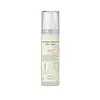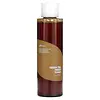What's inside
What's inside
 Key Ingredients
Key Ingredients

 Benefits
Benefits

 Concerns
Concerns

No concerns
 Ingredients Side-by-side
Ingredients Side-by-side

Water
Skin ConditioningButylene Glycol
HumectantNiacinamide
SmoothingEthylhexyl Stearate
EmollientCaprylic/Capric Triglyceride
MaskingCetyl Ethylhexanoate
EmollientGlutathione
Sodium Ascorbyl Phosphate
AntioxidantSalix Alba Bark Extract
AstringentAdenosine
Skin ConditioningSodium Hyaluronate
HumectantHydroxypropyltrimonium Hyaluronate
Sodium Acetylated Hyaluronate
HumectantHydrolyzed Hyaluronic Acid
HumectantHyaluronic Acid
HumectantSodium Hyaluronate Crosspolymer
HumectantHydrolyzed Sodium Hyaluronate
Skin ConditioningPotassium Hyaluronate
Skin ConditioningPanthenol
Skin ConditioningSqualane
EmollientGlycerin
HumectantAllantoin
Skin ConditioningCyanocobalamin
Skin ConditioningTerminalia Ferdinandiana Fruit Extract
AntioxidantHippophae Rhamnoides Fruit Extract
Skin ConditioningMalpighia Glabra Fruit Extract
Skin ConditioningBrassica Oleracea Italica Extract
AstringentMorus Alba Root Extract
BleachingPhaseolus Radiatus Seed Extract
Skin ConditioningCanavalia Gladiata Seed Extract
Skin ConditioningGlycine Soja Seed Extract
Skin ConditioningLens Esculenta Seed Extract
Skin ProtectingCeratonia Siliqua Seed Extract
Skin ConditioningCentella Asiatica Leaf Extract
Skin ConditioningCeramide NP
Skin ConditioningAcetyl Octapeptide-3
HumectantDipeptide-1
Skin ConditioningTripeptide-2
Skin ConditioningPalmitoyl Dipeptide-7
Skin ConditioningDipeptide-4
Skin ConditioningSorbitan Stearate
EmulsifyingCetearyl Alcohol
Emollient1,2-Hexanediol
Skin ConditioningStearic Acid
CleansingPolysorbate 60
EmulsifyingEthylhexylglycerin
Skin ConditioningHydrogenated Olive Oil Unsaponifiables
EmollientDisodium EDTA
Hydroxypropyl Cyclodextrin
MaskingPueraria Lobata Root Extract
HumectantLactobacillus Ferment Lysate
Skin ConditioningChlorphenesin
AntimicrobialMaltodextrin
AbsorbentMelia Azadirachta Flower Extract
Skin ConditioningOcimum Sanctum Leaf Extract
Skin ConditioningMelia Azadirachta Leaf Extract
Skin ConditioningArginine
MaskingPhytosterols
Skin ConditioningCarbomer
Emulsion StabilisingCurcuma Longa Root Extract
MaskingCorallina Officinalis Extract
Skin ConditioningCaprylyl Glycol
EmollientSodium Citrate
BufferingPolyglyceryl-10 Laurate
Skin ConditioningCitric Acid
BufferingWater, Butylene Glycol, Niacinamide, Ethylhexyl Stearate, Caprylic/Capric Triglyceride, Cetyl Ethylhexanoate, Glutathione, Sodium Ascorbyl Phosphate, Salix Alba Bark Extract, Adenosine, Sodium Hyaluronate, Hydroxypropyltrimonium Hyaluronate, Sodium Acetylated Hyaluronate, Hydrolyzed Hyaluronic Acid, Hyaluronic Acid, Sodium Hyaluronate Crosspolymer, Hydrolyzed Sodium Hyaluronate, Potassium Hyaluronate, Panthenol, Squalane, Glycerin, Allantoin, Cyanocobalamin, Terminalia Ferdinandiana Fruit Extract, Hippophae Rhamnoides Fruit Extract, Malpighia Glabra Fruit Extract, Brassica Oleracea Italica Extract, Morus Alba Root Extract, Phaseolus Radiatus Seed Extract, Canavalia Gladiata Seed Extract, Glycine Soja Seed Extract, Lens Esculenta Seed Extract, Ceratonia Siliqua Seed Extract, Centella Asiatica Leaf Extract, Ceramide NP, Acetyl Octapeptide-3, Dipeptide-1, Tripeptide-2, Palmitoyl Dipeptide-7, Dipeptide-4, Sorbitan Stearate, Cetearyl Alcohol, 1,2-Hexanediol, Stearic Acid, Polysorbate 60, Ethylhexylglycerin, Hydrogenated Olive Oil Unsaponifiables, Disodium EDTA, Hydroxypropyl Cyclodextrin, Pueraria Lobata Root Extract, Lactobacillus Ferment Lysate, Chlorphenesin, Maltodextrin, Melia Azadirachta Flower Extract, Ocimum Sanctum Leaf Extract, Melia Azadirachta Leaf Extract, Arginine, Phytosterols, Carbomer, Curcuma Longa Root Extract, Corallina Officinalis Extract, Caprylyl Glycol, Sodium Citrate, Polyglyceryl-10 Laurate, Citric Acid
Water
Skin Conditioning1,2-Hexanediol
Skin ConditioningHydroxyacetophenone
AntioxidantCamellia Sinensis Leaf Extract
AntimicrobialAmmonium Acryloyldimethyltaurate/Vp Copolymer
Allantoin
Skin ConditioningDisodium EDTA
Butylene Glycol
HumectantDipotassium Glycyrrhizate
HumectantHydrolyzed Hyaluronic Acid
HumectantPhenoxyethanol
PreservativeBeta-Glucan
Skin ConditioningGinkgo Biloba Leaf Extract
Skin ConditioningCentella Asiatica Extract
CleansingSalix Alba Bark Extract
AstringentVaccinium Angustifolium Fruit Extract
Skin ProtectingEthylhexylglycerin
Skin ConditioningPinus Palustris Leaf Extract
TonicUlmus Davidiana Root Extract
Skin ConditioningOenothera Biennis Flower Extract
AstringentPueraria Lobata Root Extract
HumectantWater, 1,2-Hexanediol, Hydroxyacetophenone, Camellia Sinensis Leaf Extract, Ammonium Acryloyldimethyltaurate/Vp Copolymer, Allantoin, Disodium EDTA, Butylene Glycol, Dipotassium Glycyrrhizate, Hydrolyzed Hyaluronic Acid, Phenoxyethanol, Beta-Glucan, Ginkgo Biloba Leaf Extract, Centella Asiatica Extract, Salix Alba Bark Extract, Vaccinium Angustifolium Fruit Extract, Ethylhexylglycerin, Pinus Palustris Leaf Extract, Ulmus Davidiana Root Extract, Oenothera Biennis Flower Extract, Pueraria Lobata Root Extract
 Reviews
Reviews

Ingredients Explained
These ingredients are found in both products.
Ingredients higher up in an ingredient list are typically present in a larger amount.
1,2-Hexanediol is a synthetic liquid and another multi-functional powerhouse.
It is a:
- Humectant, drawing moisture into the skin
- Emollient, helping to soften skin
- Solvent, dispersing and stabilizing formulas
- Preservative booster, enhancing the antimicrobial activity of other preservatives
Allantoin is a soothing ingredient known for its protective and moisturizingg properties. Because of this, it is often added to products with strong active ingredients.
Studies show higher concentrations of this ingredient can promote wound healing.
Though it can be derived from the comfrey plant, allantoin is produced synthetically for cosmetic products to ensure purity.
Learn more about AllantoinButylene Glycol (or BG) is used within cosmetic products for a few different reasons:
Overall, Butylene Glycol is a safe and well-rounded ingredient that works well with other ingredients.
Though this ingredient works well with most skin types, some people with sensitive skin may experience a reaction such as allergic rashes, closed comedones, or itchiness.
Learn more about Butylene GlycolDisodium EDTA plays a role in making products more stable by aiding other preservatives.
It is a chelating agent, meaning it neutralizes metal ions that may be found in a product.
Disodium EDTA is a salt of edetic acid and is found to be safe in cosmetic ingredients.
Learn more about Disodium EDTAEthylhexylglycerin (we can't pronounce this either) is commonly used as a preservative and skin softener. It is derived from glyceryl.
You might see Ethylhexylglycerin often paired with other preservatives such as phenoxyethanol. Ethylhexylglycerin has been found to increase the effectiveness of these other preservatives.
Hydrolyzed Hyaluronic Acid is a form of hyaluronic acid. It is created by the hydrolysis of hyaluronic acid with a high molecular weight. Once created, Hydrolyzed Hyaluronic Acid has a low molecular weight.
Low molecular weight HA has been shown to hydrate and increase elasticity of the skin. Increasing elasticity is also associated with reduction of wrinkle depth.
One study found topical low molecular weight hyaluronic acid may be considered for the treatment of rosacea in the adult population. However, we always recommend speaking with a professional about your skin concerns.
Hyaluronic acids are a humectant. This means they draw moisture from the air. Hyaluronic acids help moisturize, soothe, and protect the skin.
Read more about other common forms of hyaluronic acid:
Learn more about Hydrolyzed Hyaluronic AcidWe don't have a description for Pueraria Lobata Root Extract yet.
Salix Alba Bark Extract comes from the white willow tree, which is native to Europe and Central Asia.
Salix Alba Bark Extract has often been described as salicylic acid's cousin. This is due to the salicin it contains. However, studies are limited showing salix alba bark to be an effective salicylic acid alternative.
Salicin does have anti-inflammatory and antioxidant properties. It has shown to decrease the formation of inflammatory mediators, such as tumor necrosis factor-α and nuclear factor-kappa B. Salicin also has a mildly exfoliating effect on the skin.
Several other components in salix alba bark extract also contain antioxidant properties, such as flavonoids and polyphenols. Antioxidants may help with anti-aging as they neutralize harmful free-radical molecules.
Willow Bark extract has been used for thousands of years. Ancient civilizations used white willow to help treat pain and fevers.
Learn more about Salix Alba Bark ExtractWater. It's the most common cosmetic ingredient of all. You'll usually see it at the top of ingredient lists, meaning that it makes up the largest part of the product.
So why is it so popular? Water most often acts as a solvent - this means that it helps dissolve other ingredients into the formulation.
You'll also recognize water as that liquid we all need to stay alive. If you see this, drink a glass of water. Stay hydrated!
Learn more about Water